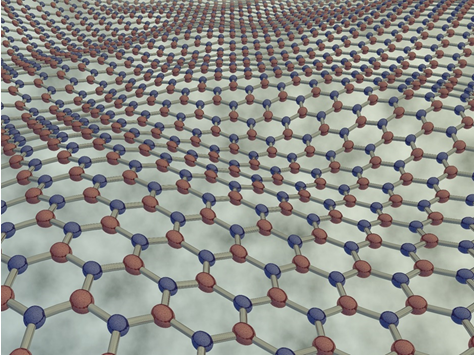New study unravels the electronic mechanisms governing chemical bonding of new class of materials called incipient metals with metavalent bonding (MVB) within a single 2D layer of Group IV chalcogenides that can boost energy harvesting and power generation.
Sourcing new materials with unique properties can help in the advancement of current technology. Recently, scientists are turning to a class of compounds called group IV chalcogenides that have intriguing properties, making them suitable candidates for technological applications. These compounds contain an element from group VI of the periodic table combined with an element from group III–V of the periodic table, like PbTe, SnTe, and GeTe.
Chalcogenides can transition reversibly between amorphous and crystalline phases in response to changes in temperature, pressure, or electrical fields. This unique characteristic has practical applications in rewritable optical discs and electronic memory devices due to the contrasting optical responses of the two phases. Additionally, these chalcogenides are valuable in energy harvesting and power generation applications, thanks to their high electrical conductivity and effective conversion of thermal energy into electrical energy through the thermoelectric effect.
A recent study by Professor Umesh Waghmare from Theoretical Sciences Unit at Jawaharlal Nehru Centre for Advanced Scientific Research (JNCASR) Bengaluru (an autonomous institution under the Department of Science & Technology, Govt. of India) explored the possibility of introducing the recently introduced metavalent bonding (MVB) within a single 2D layer of Group IV chalcogenides, investigating its mechanisms and the resulting consequences on material properties.
The study, published in Angewandte Chemie International Edition and supported by J. C. Bose National Fellowship of the SERB-DST, Government of India, and JNCASR research fellowship, provides a first-principle theoretical analysis focusing on the bonding nature within five different 2D lattices of Group IV chalcogenides. This category includes compounds which exhibit remarkable properties, transitioning reversibly from a glassy amorphous structure to a crystalline form in less than 100 nanoseconds when subjected to heating or cooling.
Driven by an idea presented by Professor C. N. R. Rao, the study aimed to unravel the electronic mechanisms governing the chemical bonding in these materials. The findings, which took nearly two years of theoretical and computational work, have shed light on the unique properties of these materials, challenging conventional chemical bonding ideas.
Prof. Waghmare says, "These materials, termed incipient metals, possess a combination of properties that defy conventional understanding. They exhibit electrical conductivity akin to metals, high thermoelectric efficiency characteristic of semiconductors, and unusually low thermal conductivity, creating a triad of properties that cannot be explained by traditional chemical bonding concepts."
The groundbreaking aspect of this research lies in the elucidation of a new type of chemical bonding proposed by Matthias Wuttig in 2018—metavalent bonding. This innovative bonding concept combines features of both metallic and covalent bonding, offering a fresh perspective on the enigmatic behavior of these materials.
The theoretical work conducted by Prof. Waghmare and his team has significant implications and promising applications across industries. The chalcogenides explored in this study are already employed in computer flash memories, utilizing their ability to change optical properties during the transition from crystalline to amorphous states. Additionally, the potential use of these materials in energy storage, especially as phase change materials, opens avenues for more sustainable and efficient energy solutions.
Furthermore, the research connects with the emerging field of quantum materials, aligning with the goals of India's national mission on quantum technology. These materials, with their distinct electronic structures and properties, offer a prototypical example of quantum topological materials, a critical component in advancing quantum technologies.
This research, published in two papers—one focusing on three-dimensional materials and another on metavalent bonding in two-dimensional materials—represents a significant leap forward in understanding the chemistry of quantum materials. Prof. Waghmare emphasizes the importance of these findings, stating, "Normal chemical bonding doesn't explain the unique nature of these materials. We've uncovered the chemistry of quantum materials that opens new avenues for exploration."
Publication link: https://onlinelibrary.wiley.com/doi/10.1002/anie.202313852
Contact details:
Author Name: Prof. Umesh Waghmare
Email ID: waghmare[at]jncasr[dot]ac[dot]in

Researchers explore the possibility of metavalent bonding in 2D monolayers of Group IV monochalcogenides
Image credits: Shutterstock






























